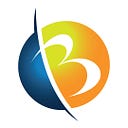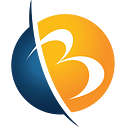Choosing your Tech platform for your next Cross platform app — Flutter or React Native ?
If you’re planning to develop a cross-platform mobile app, one of the most critical decisions you’ll need to make is choosing the right development framework. Two of the most popular options are Flutter and React Native. While both frameworks have their own strengths and weaknesses, making the right choice for your project can mean the difference between success and failure.
In this blog post, we’ll compare Flutter and React Native and help you make an informed decision about which platform is the best fit for your next cross-platform app.
Introducing Flutter and React Native As Popular Frameworks
In today’s mobile-first world, it’s essential to have a strong presence on both iOS and Android platforms. However, developing separate native apps for each platform can be time-consuming and costly. This is where cross-platform app development comes in, enabling developers to create mobile apps that can run seamlessly on both platforms using a single codebase.
Flutter and React Native are two of the most popular cross-platform development frameworks used by developers worldwide. Flutter, developed by Google, offers a widget-based architecture and uses the Dart programming language, while React Native, developed by Facebook, is based on JavaScript and uses a component-based architecture. Each framework has its own set of strengths and weaknesses, making it crucial to understand the differences between them before deciding which one to use for mobile application development services.
Flutter: Strengths, Weaknesses, and Features
Flutter is a mobile app development framework created by Google in 2017. It uses the Dart programming language, which is compiled to native code for both Android and iOS platforms.
- Strengths — Flutter’s strength lies in its widget-based architecture, which enables developers to build responsive and visually appealing user interfaces.
- Key Features — Flutter’s hot reload capability allows developers to see changes in real-time, speeding up the development process. It uses the custom rendering engine Skia, providing high-performance graphics and smooth animations, making it an excellent choice for visually rich apps. Flutter has a growing community and ecosystem with many open-source packages available on pub.dev, allowing developers to add features to their apps quickly.
- Weaknesses — However, one potential weakness of Flutter is its relatively steep learning curve, particularly for developers who are not familiar with the Dart programming language. Additionally, some developers have raised concerns about the size of Flutter apps, which can be larger than those developed using other frameworks.
React Native: Strengths, Weaknesses, and Features
React Native is a popular framework for building native mobile applications using the JavaScript programming language. It allows developers to create mobile applications for iOS and Android platforms simultaneously, using a single codebase.
- Strengths — React Native’s architecture is based on the same principles as React, a popular JavaScript library for building web applications. It uses a component-based architecture, which means that developers can build reusable UI components that can be used across different parts of the application. These components are rendered natively on the device, which gives React Native applications a native look and feel.
- Key Features — React Native’s hot reloading feature allows developers to see changes they make to the code immediately reflected in the running application, making the development process faster and more efficient. Its performance and rendering capabilities are strong due to the use of native UI components and APIs, resulting in an application performance comparable to fully native ones. The framework has a large and active community of developers, with a vast ecosystem of third-party libraries and tools available, making it easier to build complex applications quickly.
- Weaknesses -However, React Native also has some weaknesses. Because it uses JavaScript, it can be slower than fully native applications, particularly for complex animations or interactions. Additionally, some native APIs may not be available in React Native, which can limit the functionality of the application. Finally, because React Native is a relatively new technology, there may be a learning curve for developers who are not already familiar with React or the JavaScript ecosystem.
Flutter vs. React Native: A Grudge Match of the Two
Flutter and React Native are both popular frameworks for developing cross-platform mobile applications, but they differ in several key areas.
Syntax and Language Features
- Flutter uses the Dart programming language, which is similar to Java or C# and offers features such as static typing and asynchronous programming.
- React Native, on the other hand, uses JavaScript and its modern syntax and features like ES6, ES7, and TypeScript.
Architecture and Design Patterns
- Flutter has a layered architecture, with a widget tree that is rebuilt when the state changes, providing efficient rendering of complex UI components.
- React Native, on the other hand, uses a component-based architecture, similar to React, that allows for building reusable UI components.
UI Components and Customization Options
Both frameworks provide a wide range of pre-built UI components that can be customized as needed.
- Flutter provides a rich set of Material Design and Cupertino widgets.
- React Native has components that mimic native iOS and Android UI components.
Performance and Scalability
- Flutter uses a custom rendering engine called Skia, which provides high-performance graphics and smooth animations. However, Flutter’s architecture allows for efficient rendering of complex UI components, which further improves the performance of the application.
- React Native uses native components to render UI, which gives it an advantage in terms of performance.
Tooling and Ecosystem
Both frameworks have a growing ecosystem of packages and plugins available for developers to use.
- Flutter provides its own integrated development environment (IDE) called Flutter Studio and has a rich set of command-line tools.
- React Native relies on external IDEs such as Visual Studio Code or IntelliJ IDEA.
Learning Curve and Community Support
- Flutter has a steeper learning curve due to its use of a unique programming language and custom rendering engine. However, it has a growing community and active support from Google.
- React Native has a larger community and an established ecosystem due to its use of JavaScript and similarities to React.
Examples of Apps Built with Flutter and React Native and Their Use Cases
Flutter and React Native have been used to build a wide range of apps, from simple utility apps to complex, feature-rich applications. Here are some examples of hybrid app development built with each platform and why the respective platform was chosen:
Flutter
- Google Ads — Google Ads was built with Flutter because of its fast rendering and smooth animations, which allowed for a better user experience. Additionally, Flutter’s customizability and ease of development made it easier for the Google Ads team to build and maintain the app.
- Reflectly — Reflectly , a popular journaling app, was built with Flutter because of its ability to provide a native look and feel across both Android and iOS platforms. Flutter’s customizable widgets also allowed for a unique and engaging user interface, which helped the app stand out in a crowded market.
- Xianyu — Xianyu , a Chinese e-commerce app, was built with Flutter to improve its user experience and performance. Flutter’s fast rendering and customizable widgets allowed for smoother animations and a more responsive UI, which resulted in a better user experience and increased engagement.
React Native
- Facebook — Facebook’s mobile app was built with React Native because of its ability to provide a native look and feel across both Android and iOS platforms. Additionally, React Native’s ability to seamlessly integrate with native modules and components allowed for easy integration of platform-specific features, such as push notifications and camera functionality.
- Instagram — Instagram’s mobile app was also built with React Native for similar reasons. React Native’s customizability and ease of development allowed the Instagram team to build and maintain a visually stunning and engaging app, while also providing a seamless experience across multiple platforms.
- Bloomberg — Bloomberg’s mobile app was built with React Native to streamline development and reduce time-to-market. React Native’s fast iteration and hot reloading features allowed the Bloomberg team to quickly prototype and test new features, while also maintaining a high level of performance and reliability.
The Bottom Line
Both Flutter and React Native are powerful and versatile tech platforms that offer a range of benefits and drawbacks. Flutter has an advantage in its fast development speed, hot reload feature, and customizability, while React Native has an edge in its native look and feel, platform-specific features, and large developer community.
When deciding between Flutter and React Native for your next project, it’s essential to evaluate your project requirements and priorities carefully. Consider factors such as performance, user experience, development time, maintenance requirements, and the skills and experience of your development team.
It’s important to stay updated on emerging trends and technologies, like SwiftUI and Kotlin Multiplatform, which could provide new options for native app development in the future.
Choosing the best tool for your project requires a thorough understanding of its unique requirements and objectives. Working with a leading mobile app development company, such as Binmile, can assist in making an informed decision based on the latest technologies and industry best practices.

